Reference Book: Star Wars Saga Edition Force Unleashed Campaign Guide
Affiliation Page: The Galactic Empire
In the time since the establishment of the Empire, much has changed. From the superficial to the symbolic to hard reality, the Empire has replaced the Republic in every major aspect of society. Even the name of the galactic capital has been changed, from Coruscant to Imperial Center. Day by day, Imperial power grows. The Empire replaces old bureaucracies with new ones. The Imperial military machine expands exponentially. Republic symbols are destroyed or replaced with Imperial equivalents.
The Imperial Government
Emperor Palpatine has replaced or revamped nearly every part of the Republic government, creating his new Galactic Empire in the image he desires. The Emperor retains complete control over all Imperial functions and military forces. He is the Empire, and the Empire is his. Few dare to openly oppose him. Everyone understands that the Emperor's word is essentially law. Currently, he is feared more than he is respected. However, as time passes and more supporters of the New Order come forward or are indoctrinated, more of his underlings truly respect him.
The Emperor leads a double life, even now. Emperor Palpatine is the public face he uses to maintain control of the Empire. He appears to be genuinely worried about the state of the Empire. He rails against corruption. He promotes peace and security. He negotiates, however forcefully, with Imperial Senators on critical matters of state and social law. He maintains control by standing firm, unafraid to use heavy-handed tactics. He legitimizes his most outrageous moves by manipulating the Imperial Senate to support him or by restricting reports of anything that threatens his person or position.
His Darth Sidious persona remains out of public view. Almost no one outside his inner circle and selected underlings know him as anything other than Palpatine. As always, the Sith Lord works from the shadows. As Emperor, Sidious now has great latitude to pursue his own dark projects, plus the power and security to keep them hidden. Unbeknownst to the galaxy at large, Sidious has begun to expand the reach of The Dark Side. Many of his inner circle are trained in aspects of The Dark Side of The Force. Secret prophets, the Emperor's Hands and Inquisitors, are known to some, but they are only the beginning. On the planet Byss, in The Deep Core, Sidious has established a secret training facility to attract those who are dedicated to The Dark Side. Though it might take decades, he plans that they will someday become integral to Imperial power and leadership.
Even though the Emperor has his own vision of the galaxy's future, he remains open to new and effective ideas that support his goals. As such, Grand Moff Wilhuff Tarkin's doctrine of fear (Which will become known as the Tarkin Doctrine) received much interest, and the recently promoted Grand Moff is the brightest star within the new government. Many of Tarkin's ideas are now beginning to be fully implemented.
The Imperial Senate
After the declaration of the Empire, the Galactic Senate ceased to exist and was immediately replaced by its Imperial successor. For now, the Emperor needs the Senate to retain control of the galaxy. The Senate gives dissenters a place to air their grievances, and the Emperor knows that such a forum must be allowed to exist, or he will face greater threats. He is quite willing to give the impression that he values the Senate's opinions, if it will help him retain power. The Imperial Senate is not yet completely powerless. At this stage, many Senators still believe that they are a vital element of Imperial rule. Dissenters still hope to use the Senate to regain lost rights and otherwise reform the government. Even if they have limited influence over the Emperor, they still command a great deal of respect from other government officials and the galaxy at large. Senators also meet and negotiate on local issues outside of direct Imperial control. The Senate is still a public forum that reaches much of the galaxy. When the Senate is unable to counter the Emperor directly, dissenting Senators might still get their point of view heard and out to the masses. The most daring Senators even discuss how to retake the galaxy, but they are few, and such talks are extremely secret. The Emperor's spies are everywhere, even among the ranks of the Senators. Ultimately, if something happens to the Emperor, the Senate believes it would naturally provide the forum to establish a new government.
Planetary And Sector Government
One of the Emperor's first major changes to government structure was the creation of Imperial governors, otherwise known as Moffs. ln the earliest days of the New Order, a Moff oversees a territory of several sectors, as dictated by military and political needs. However, as Imperial power solidifies, the number of Moffs grows, and many foresee the day when each sector will be assigned its own Moff. The title of Grand Moff has recently been created, with more such officials expected to be appointed as the concept of oversectors comes into wider use. Moffs exist in parallel with the Imperial Senators. As Imperial governors, the Moffs report directly to Emperor Palpatine. Although they might need to negotiate with Senators for political reasons, individual Senators have no authority over them. Imperial governors are responsible for security and have direct control over all Imperial military forces in their territory. They also expand and protect the ideals of the New Order under the guise of "Protecting" those who reject "Alien" cultures in favor of a completely Human culture and government. A few corporate-governed sectors are now under direct Imperial control. In many cases, an interstellar corporation was either nationalized outright for "Security Reasons," or was a former member of the Separatist movement.
All holdings of the Trade Federation and other major supporters of The Confederacy of Independent Systems have been transferred to Imperial control or to Imperial corporate supporters, such as Sienar Systems. Such moves bring greatly needed materials and resources directly to the Imperial war machine. At this stage, the vast majority of planets retain their own governments, much as they have for centuries. On some select and troublesome worlds, the Emperor's advisors install planetary governors to bring these planets in line with Imperial edicts. Most of these are non-Human worlds, such as Kashyyyk, and the governors have virtual free rein to keep these planets under control. There are relatively few planetary governors, although it is troublesome to some that once one is installed, he or she appears to become a permanent fixture. In principle, the Emperor prefers to keep out of local politics, especially where the citizens already support the New Order. He prefers to use fear and force to keep local governments under control. In reality, Palpatine is quite willing to step in when it suits his plans, though he might use intermediaries openly or covertly as needed.
Agents of Imperial Rule
With Imperial governance has come a vast array of public and secret organizations designed to help maintain order at every level of society. Some of these organizations are extremely specialized, suited to a specific role. Generally speaking, the more specialized a group's role, the fewer members and the more secret the group.
The Tarkin Doctrine
Although they have taken a few years to fully implement, the ideas proposed by Governor Tarkin are central to Imperial rule. Within the Imperial leadership, they are coming to be known as the Tarkin Doctrine, which is summarized below.
- Form oversectors out of multiple sectors that show signs of rebellion or chronic unrest. Military forces assigned to these oversectors can respond rapidly to any threat, thereby eliminating such threats while they are still small.
- Grant command of an oversector to a single individual who answers directly to the Emperor, in order to bypass delays and neutralize political opportunism.
- Use the HoloNet Transceivers on Imperial command ships and the Imperial Center to take advantage of The HoloNet's unrivaled speed in communications.
- Rule through the fear of force, rather than through force itself. Generate the impression that the Empire can call upon such overwhelming force that resistance is futile. Demonstrations of such force are key to this idea.
- Use size to intimidate. Citizens are intimidated by Star Destroyers primarily because of their size and perceived firepower. Most ships do not dare to stand against them. A much larger vessel with a weapon of vast power could equally intimidate entire star systems.
The Gamemaster can use the Tarkin Doctrine in a campaign in several ways. At the simplest level, using a Star Destroyer to intimidate the characters is a prime display of the Tarkin Doctrine. Imperial opponents who threaten with great force are another example. If the characters have access to large ships or become engaged in large-scale fleet battles, they might see the results of HoloNet communications firsthand as massive Imperial reinforcements arrive. Characters might see the oversectors come into existence, especially if they participate in a successful group of resistance fighters in The Outer Rim.
Compnor
Of all the new Imperial organizations, none is more accessible to the average galactic citizen than the Commission for the Preservation of the New Order. It might seem ironic that COMPNOR is the successor to the Commission for the Preservation of the Republic (COMPOR), a volunteer corps committed to supporting the Chancellor and the war. However, COMPOR was more dedicated to Palpatine than to the Republic. Using this natural base of supporters, COMPNOR was poised to provide a growing number of loyal Imperial supporters and activists.
Anyone can join COMPNOR, though the overwhelming majority of members are Human. At the most basic level, COMPNOR works as a grass-roots effort on Imperial-friendly worlds, where any citizen can activity promote and participate in the Empire's greater goals. However, COMPNOR is more than just a political action body or a social club. It actively promotes the ethics and ideals of the New Order to all, starting with the youngest. It is an integral part of Imperial society.
COMPNOR is ruled by the Select Committee. In the first years of the Empire, the committee's ranks swelled to around twenty five thousand members. The Emperor recently took an active role in COMPNOR's development and "Recommended" some changes. As such, the Select Committee's membership numbers have rapidly declined. The Committee does not comment on the extent of the reduction or the extent of the Emperor's involvement with the daily operations of COMPNOR.
COMPNOR is divided into several divisions. SAGroup (The Sub Adult Group) is by far the largest and most active in recruiting and indoctrinating the young people of the galaxy into the ways of the New Order. The Coalition for Progress started as a minor division overseeing the cultural adoption of the New Order within all sectors. Although it is relatively small, its power is growing as its information network expands throughout the Empire. The Coalition for Improvements was recently broken out of the Coalition for Progress to take a more direct role in improving a sector's technical and social infrastructure to conform to the New Order. The final two divisions are CompForce and the Imperial Security Bureau, described in detail below.
CompForce
CompForce is the military arm of COMPNOR. It is filled with New Order loyalists selected from other divisions. CompForce's near-fanatical dedication to the ideals of the New Order often brings it into conflict with the regular Imperial military. Not only does CompForce receive priority in terms of equipment and training, its members function as political spies when operating with the regular military. As a fighting group, CompForce members are loyal and fearsome. Their rigorously lethal training means that the best, or more often the luckiest, become active soldiers. As such, most CompForce units are dangerous combatants, and a few of the best are becoming elite units.
Imperial Security Bureau
The Emperor's advisors created the Imperial Security Bureau (lSB) as a direct competitor to Imperial Intelligence. The ISB is staffed with New Order loyalists, a situation that results in less objective, though dedicated and enthusiastic, information gathering. The ISB performs a combination of secret police and intelligence duties. Its agents are equally at ease operating in public or clandestinely and are not afraid to identify themselves when necessary. ISB agents are perceived to be everywhere. The ISB operates from an enormous central office on Imperial Center. It actively competes with Imperial Intelligence to gather the best data, albeit with a loyalist slant. It has offices and officers scattered throughout the galaxy and can be found on every major world. In the three short years of the New Order, ISB has become a well-known and feared commodity.
Imperial Intelligence
Affiliation Page: Imperial Intelligence
In the last days of the Republic, the central government's four primary and competing intelligence services secretly banded together to form a single organization to eliminate corruption and abuse of intelligence by manipulative Senators. The new leadership revealed itself upon the announcement of the Empire, much to the chagrin of Senators and Emperor's advisors who had bribed the old services to produce the information they wanted. They are led by a mysterious group called the Ubiqtorate. The public head of Imperial Intelligence is currently Armand Isard.
Imperial Intelligence members are highly professional and well trained. Although loyal to the New Order, they are not fanatically dedicated to it as their ISB counterparts are. Imperial Intelligence reports to the Emperor, as well as to The Imperial Military, which regards its service as less politically motivated and far more objective. The four divisions of Imperial Intelligence are Internal Organization, the Analysis Bureau, the Bureau of Operations, and Intelligence.
Unlike the ISB, Imperial Intelligence is highly decentralized, with offices and assets scattered throughout the galaxy. Although the secretive Ubiqtorate is believed to reside on Imperial Center, the intelligence service relies on a vast, interstellar communications network called Sector Plexus for its operations and reporting. This highly redundant and complex network uses a combination of Hyperspace-capable Message Droids and short-range broadcasts to relay messages across the galaxy, but has no access to The HoloNet.
Imperial Intelligence only collects and analyzes data and information. Any action resulting from its data is taken by other Imperial agencies, usually The Imperial Military, Moffs, and planetary governors. If needed, it also passes information on to specific planetary governments.
The Inquisitorius
Affiliation Page: The Inquisitorius
Imperial Inquisitors are the latest, secret addition to Imperial Intelligence. At the request of the Emperor, a special division has been created called The Inquisitorius, which specializes in scouring the galaxy for Force-users of all types and eliminating them. Led by a Grand Inquisitor, these Dark Side Force-users seek out surviving Jedi, adepts, primitive shamans, and all students of The Force who are not aligned with the Emperor.
The Inquisitors are ruthless and effective even when not using The Dark Side. Rumors of their methods and existence are slowly spreading throughout the intelligence services, making them among the most feared operatives. The Inquisitors work best through interrogation and investigation, with and without The Force. Few can withstand an Inquisitor's interrogation session.
Some Inquisitors learn significant Lightsaber skills, but most do not have the formal training of a Sith or a Jedi. Many Inquisitors learn only basic or specialized Force abilities best suited for interrogation. If they happen upon a Jedi or some other Force-user of significant skill, they might pass the word to Darth Vader that the matter requires his special attention.
The Emperor's Hands
Though it is unknown exactly when Emperor Palpatine began employing talented dark side Force-users as his exclusive Emperor's Hands, it is likely they began their service in the earliest years of the New Order. The Emperor had long understood the need for operatives who worked for and answered only to him. His Sith apprentice fulfilled such a role in the past, but once Darth Vader became a public figure, the Emperor turned to less skilled, but strikingly loyal, individuals. Called the Emperor's Hands, each believes that he or she is the only one who receives such special attention and Force training from the leader of the galaxy.
Emperor's Hands carry out the Emperor's most sensitive and secret missions anywhere in the galaxy. They have extremely high security clearances. They can call upon any Imperial reinforcements as required, and they have special codes that provoke an immediate response from any high-ranking military commander or political officer. They almost never reveal their true position, except to ranking officials when required to complete a mission.
Each Emperor's Hand is trained in The Dark Side of The Force, and the Emperor has tailored each to use his or her unique skills to the utmost. He carefully controls their training and learning, lest they become a threat to him.
Imperial Personnel
The general personnel available to the Empire is as vast and varied as the galaxy itself. Specialized troops and agents are available for every type of mission or situation. All answer to the Emperor, though some are more loyal or fanatical to the New Order than others. All of the personnel presented here are suitable for a Dark Times Campaign.
Imperial Military
The standard Imperial military forces are drawn from Human recruits and draftees across the galaxy. Each branch of service includes many similar types of soldiers, pilots, and supporting roles, though each group is trained specifically for its branch.
| NAME | CHALLENGE LEVEL | DESCRIPTION |
|---|---|---|
| AT-AT Pilot | CL 2 | Some of the best ground pilots in the Empire, controlling the mighty AT-AT walkers. |
| AT-ST Pilot | CL 2 | Imperial Army pilots operating the agile AT-STs for ground assaults. |
| Death Star Trooper | CL 2 | Handpicked trooper chosen by Grand Moff Tarkin to operate The Death Star. |
| Elite Death Star Trooper | CL 6 | Handpicked commando chosen by Grand Moff Tarkin to operate The Death Star. |
| Imperial Army Trooper | CL 1 | Garrison forces acting as basic peace keepers within the Empire, supporting the more notable Stormtroopers when needed. |
| Imperial Navy Trooper | CL 1 | Starship personnel, manning the many systems and stations of the fleet. |
| Imperial Field Medic | CL 5 | Highly trained medical specialists found in every branch of service. |
| Imperial Royal Guard | CL 10 | Highly trained guards and soldiers loyal solely to Emperor Palpatine. |
| Imperial Sovereign Protector | CL 14 | Newly established elites of the Royal Guard, with rudimentary Force abilities. |
| Imperial Shadow Guard | CL 12 | Special agents of the Emperor directed to perform dangerous missions. |
Stormtroopers
Much like their predecessors, the Clone Troopers, Stormtrooper types exist for every battlefield. Although everyone in the galaxy has seen a standard Stormtrooper and Scout Troopers, the more specialized versions are rarely seen away from the battlefield.
| NAME | CHALLENGE LEVEL | DESCRIPTION |
|---|---|---|
| 501st Legion Stormtrooper | CL 6 | An elite Stormtrooper unit, under the direct command of Darth Vader. |
| Clone Trooper Veteran | CL 3 | The longest serving members of the Grand Army, with a reckless desire to die on the battlefield. |
| Spaarti Stormtrooper | CL 1 | Flash trained clones, prone to bouts of madness and rage. |
| Phase 0 Dark Trooper | CL 3 | Cybernetically augmented Clone Troopers, often against their will, becoming more machine than man. |
| Coruscant Guard | CL 5 | |
| EVA Trooper | CL 7 | |
| Jumptrooper | CL 7 | Acclaimed troopers with unparalleled versatility on the battlefield, equipped with devastating Rail Detonator Guns. |
| Radtrooper | CL 4 | |
| Stormtrooper Commander | CL 6 |
Compnor Operatives
COMPNOR Operatives come in all levels of ability and experience. The most commonly encountered types are presented below.
| NAME | CHALLENGE LEVEL | DESCRIPTION |
|---|---|---|
| CompForce Trooper | CL 3 | |
| ISB Agent | CL 4 | |
| ISB Officer | CL 9 |
Imperial Secret Forces and Operatives
As the Empire grows in power and reach, the variety of agents and operatives expands to fulfill a wide range of roles, each selected specifically by the Emperor. These are among the most secret operatives at Palpatine's command. Some, such as the Emperor's Hands and Imperial Inquisitors, are not meant to be completely secret, but rather intimidating and fearsome agents whom high-ranking officers and officials are reluctant to cross.
Certain agents, particularly those working in and around the Emperor's fortress world of Byss, are hidden from the public and the vast majority of Imperial officials. Unlike with the Emperor's Hand or Inquisitors, rumors of these agents are mercilessly squashed, and those who discover them are hunted without end.
| NAME | CHALLENGE LEVEL | DESCRIPTION |
|---|---|---|
| Emperor's Hand | CL 15 | |
| Imperial Dungeoneer | CL 5 | |
| Imperial Agent | CL 5 | |
| Imperial Inquisitor | CL 13 | A terrifying Force-user trained to interrogate with fear and cruelty. |
| Imperial Sentinel | CL 3 | |
| Noghri Warrior | CL 6 | |
| Noghri Infiltrator | CL 11 |
Imperial Personalities
Using well-known characters from the Star Wars movies and Expanded Universe in your game provides players with an opportunity to interact with their favorite heroes or villains. However, since these characters generally cannot be allowed to suffer undue effects, such as harm or death, you should control exactly how much interaction is allowed.
Offscreen Adversary or Leader: Using this approach, the named character is never directly in contact with the player characters. All assignments, news, materials, and contacts are carried out through intermediaries such as important staffers, underlings, electronic messages, and so forth. You might want to create a character of your own to act as the intermediary. This approach is especially useful when a high-ranking official, such as an Imperial Senator, is serving as the group's patron. Perhaps as the characters become more powerful or complete a vital mission, they are rewarded with a face-to-face encounter with their powerful ally.
Climactic Encounter: The named character remains offscreen until the final episode or encounter of the campaign. The story, or the named character's history, might limit the character's actions, but since plenty of history goes unrecorded, the Gamemaster is allowed some leeway when using this approach. If the character is an enemy, be sure to stage the encounter to allow for escape or overwhelming backup to keep the character alive in the face of enthusiastic and creative players.
Regular Interaction: This approach works best when used with allied named characters who personally dole out assignments. Enemies might be a constant annoyance or danger- such as the ISB agent who always seems to be around at the most inopportune moments. You can also create scenes using both named enemies and allies. For example, if the characters work for Mon Mothma, they might witness direct confrontations between her and ISB Agent Wullf Yularen, who could, in turn, be interested in what the characters are up to. Although Yularen might not investigate personally, he could appear in a final scene to oversee a trap or an unusual situation.
| NAME | CHALLENGE LEVEL | DESCRIPTION |
|---|---|---|
| Starkiller | CL 14 | |
| Jan Dodonna | CL 8 | |
| Juno Eclipse | CL 11 | A model officer and pilot, assigned to aid the assignments of Starkiller. |
| Armand Isard | CL 6 | |
| Crix Madine | CL 8 | |
| Gilad Pellaeon | CL 6 | |
| Ozzik Sturn | CL 12 | |
| Wilhuff Tarkin | CL 9 | |
| Thrawn, Admiral | CL 8 | |
| Inquisitor Tremayne | CL 10 | |
| Maximilian Veers | CL 5 | |
| Wullf Yularen, Colonel | CL 6 |
Clone Wars Technology
No clear distinction in military doctrine and equipment exists between the Grand Army of the Republic and the military forces of the Empire. Unlike political reality, for which a vote or a signature on a law is all that's needed to go from one era to another, military reality is often dictated by available supply and mission parameters. Although the Empire knew what Vehicles and Starships it wanted its forces to use, and in what numbers, it was not always possible to manufacture, transport, and maintain exactly the "Desired" mix of armor or supply Vehicles to active units. Further, the scale of The Galactic Empire meant that a "Minor" number of outdated Vehicles could well number in the thousands- not enough for the whole Empire, but more than enough for the troops on a given ship or planet.
The remainder of this chapter, beginning with the "Droids" section, describes a broad selection of items in common use by the Empire in the years between the end of the Clone Wars and the Battle of Yavin. In many cases, such items are used side by side with items left over from earlier conflicts and new designs not yet in general production. Although the Empire wants to standardize everything, it is many years before this effort begins to be realized on a wide scale.
Droids
The Empire is very cautious when it comes to droids. Not only are droids among the main tools of the CIS, they are easy to reprogram and turn into enemies or spies. Indeed, elements of the Empire use droid spies to keep tabs on others within the New Order. And, of course, the swing of public opinion against droids makes them unpopular choices with the Imperial Senate, though that group might not have the power to influence military spending for much longer.
2nd-Degree Droids
The Empire uses numerous 2nd-Degree Droids, but prefers to keep them under Human influence. Medical Droids act as assistants to living doctors, Scientific Droids are kept under the control of senior scientists and researchers. Most 2nd-Degree Droids in use by the New Order are bought from commercial suppliers, but there are a few exceptions.
|
DROID MODEL |
CHALLENGE LEVEL | AVAILABLE FOR PLAYER DROID | IMAGE |
|---|---|---|---|
| IT-0 Interrogator Droid | CL 1 | 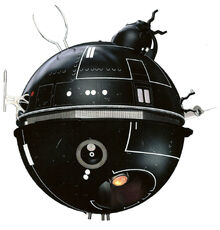 |
3rd-Degree Droids
3rd-Degree Droids are normally employed only by the upper ranks of the New Order, though many individuals who see themselves as the upper ranks (Such as Imperial Senators and mid-ranking members of COMPNOR) acquire such Droids as status symbols long before they have any real need of them. The Empire is happy to allow senior officers and officials to buy whatever 3rd-Degree Droids they want, but it also holds them accountable for the actions of such Droids. If a Protocol Droid manages to interrupt battle commands or accidentally allows spies access to classified material, its owner is held accountable as if he had taken such actions directly. As a result, many Imperial commanders use Humans for most diplomatic functions, or they keep numerous 3rd-Degree Droids that are regularly memory-wiped back to factory presets.
| DROID MODEL | CHALLENGE LEVEL | AVAILABLE FOR PLAYER DROID | IMAGE |
|---|---|---|---|
| RA-7 Protocol Droid | CL 1 | 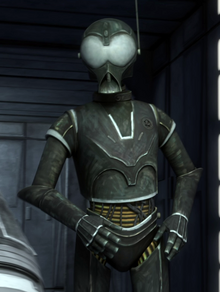 |
4th-Degree Droids
The Empire employs very few 4th-Degree Droids, for a variety of reasons, but does not rule them out for tasks they are particularly suited for. Though Imperial troops cover most combat roles adequately, the New Order turns to Military Droids for specific missions whenever they are obviously the best choice. Most such missions are intelligence-gathering, such as those undertaken by Arakyd Viper Probe Droids.
| DROID MODEL | CHALLENGE LEVEL | AVAILABLE FOR PLAYER DROID | IMAGE |
|---|---|---|---|
| PROXY | CL 13 | 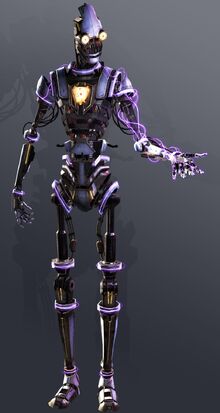 | |
| R-1 Recon Droid | CL 1 | 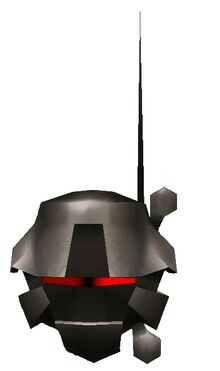 |
5th-Degree Droids
The Empire uses Labor Droids no less than any other large organization, but few are custom-built for the New Order. In most cases a Moff or admiral buys any required Labor Droids to serve specific roles within his command. Often the purchases are from local manufacturers, who happily pay a finder's fee to the commander in return for military contracts. As long as the budget doesn't get out of hand, and the needed work gets done, no one in the Empire pays any attention to these practices.
| DROID MODEL | CHALLENGE LEVEL | AVAILABLE FOR PLAYER DROID | IMAGE |
|---|---|---|---|
| MSE-6 Repair Droid | CL 0 | NO | 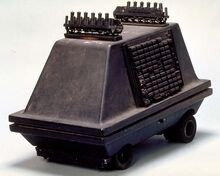 |
Weapons
The following weapons are part of the Imperial arsenal during the Dark Times. Many of them might make their way into the hands of the heroes (or even other villains).
| EXOTIC WEAPON | SIZE | COST | DAMAGE | STUN SETTING | WEIGHT | TYPE | AVAILABILITY |
|---|---|---|---|---|---|---|---|
| Neuronic Whip | Medium | 500 | - | YES (Only, 2d8) | 0.5 kg | Bludgeoning and Energy | Restricted |
| LIGHTSABER | SIZE | COST | DAMAGE | STUN SETTING | WEIGHT | TYPE | AVAILABILITY |
| Lightsaber Pike1 | Large | 4000 | 2d8 | NO | 2 kg | Energy and Slashing | Rare |
1: Is a Reach Weapon
| EXOTIC WEAPON | SIZE | COST | DAMAGE | STUN SETTING | RATE OF FIRE | WEIGHT | TYPE | AVAILABILITY |
|---|---|---|---|---|---|---|---|---|
| CR-1 Blast Cannon1 | Large | 2000 | 3d8 (Special) | NO | S | 6 kg | Energy | Military |
| HEAVY WEAPON | SIZE | COST | DAMAGE | STUN SETTING | RATE OF FIRE | WEIGHT | TYPE | AVAILABILITY |
| E-Web Missile Launcher2 | Huge3 | 9500 | 6d6 | NO | S | 42 kg | Slashing | Military |
| RIFLE | SIZE | COST | DAMAGE | STUN SETTING | RATE OF FIRE | WEIGHT | TYPE | AVAILABILITY |
| Flechette Launcher1 | Large | 1100 | 3d8 | NO | S | 5 kg | Piercing | Military |
| Rail Detonator Gun | Large | 1900 | 3d8 | NO | S | 5 kg | Piercing | Military |
1: Inaccurate Weapon.
2: Is an Area Attack Weapon
Vehicles
The Republic had found walkers to be more useful than repulsor vehicles in many engagements, and the Empire took to them as their primary heavy land units. As the New Order first started transitioning from the Grand Army of the Republic to the Imperial Army, numerous new walker designs were tried, many of which proved too expensive for long-term use. Eventually just a few standard models were produced, though older designs (and even old Wheeled Vehicles and Tracked Vehicles) were still in use for decades.
| GROUND VEHICLE | VEHICLE TYPE | CHALLENGE LEVEL | SIZE | IMAGE |
|---|---|---|---|---|
| QH-7 Chariot Speeder | Speeders | CL 8 | Huge | 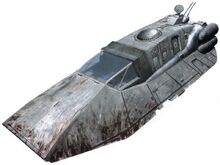 |
| TX-130T Fighter Tank | Speeders | CL 8 | Huge | 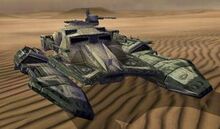 |
| PX-4 Mobile Command Base | Tracked Vehicles | CL 8 | Gargantuan | 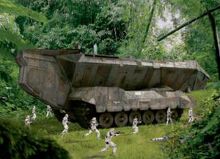 |
| AT-KT | Walkers | CL 10 | Huge | 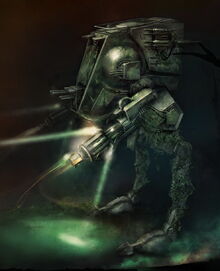 |
| AT-CT | Walkers | CL 10 | Huge | 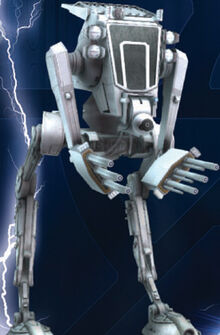 |
| HAVw A5 Juggernaut | Wheeled Vehicles | CL 11 | Colossal | 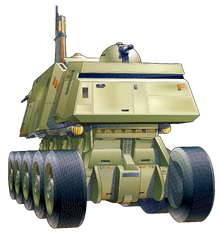 |
Starfighters
The use of Starfighters became standard during the Clone Wars, a fact that even the size-conscious Empire could not ignore. Since Starfighters can't be particularly frightening or large compared to other Starships, the new doctrine of rule through fear requires the Imperial Navy to field massive numbers of Starfighters. Military planners envision swarms of Starfighters that overload enemy targeting computers and block out the skies over target cities through sheer quantity.
Of course, such a vast number of Starfighters is expensive, and as a result the shielded, well-armored, Hyperdrive-capable Starfighter of the Clone Wars is no longer acceptable for Imperial needs. Although many such snub fighters still exist (And will for years), the new models of cheaper, weaker fighters have begun rolling off assembly lines and into Imperial hangars.
| STARFIGHTER | CHALLENGE LEVEL | SIZE | IMAGE |
|---|---|---|---|
| A-7 Hunter Interceptor | CL 6 | Huge | 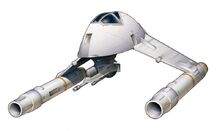 |
| TIE Prototype | CL 6 | Huge |  |
Space Transports
The Empire's move to Capital Ships that were unable to land easily on planetary surfaces makes Space Transports a critical part of any fleet. Transports are used to move troops to groundside battles, shuttle cargo from supply vessels to Star Destroyers, and move crew and commanders among ships of a fleet. Though often armed, such Starships are much more valuable as convoy vessels than as warships.
| SPACE TRANSPORTS | CHALLENGE LEVEL | SIZE | IMAGE |
|---|---|---|---|
| Guardian-Class Light Cruiser | CL 11 | Colossal |  |
| Rogue Shadow | CL 12 | Colossal | 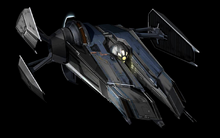 |
| Sentinel-Class Landing Craft | CL 10 | Gargantuan | 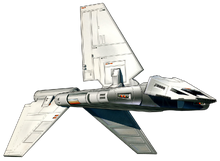 |
Capital Ships
Capital ships are the backbone of the new Imperial navy. Although Imperial Star Destroyers are the workhorses of that fleet, many other vessels are required to keep order across the vast sectors of the Empire's control.
| SPACE TRANSPORTS | CHALLENGE LEVEL | SIZE | IMAGE |
|---|---|---|---|
| Broadside-Class Cruiser | CL 14 | Colossal (Cruiser) | 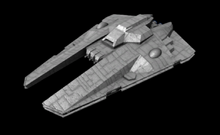 |
| Gladiator-Class Star Destroyer | CL 16 | Colossal (Cruiser) | 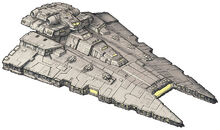 |
| Tartan-Class Patrol Cruiser | CL 15 | Colossal (Frigate) | 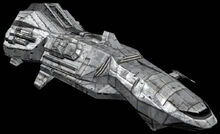 |
| Ton-Falk-Class Escort Carrier | CL 14 | Colossal | |
| Venator-Class Star Destroyer | CL 19 | Colossal (Cruiser) | 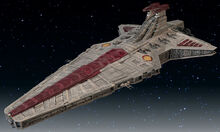 |
| Victory I-Class Star Destroyer | CL 19 | Colossal (Cruiser) |  |